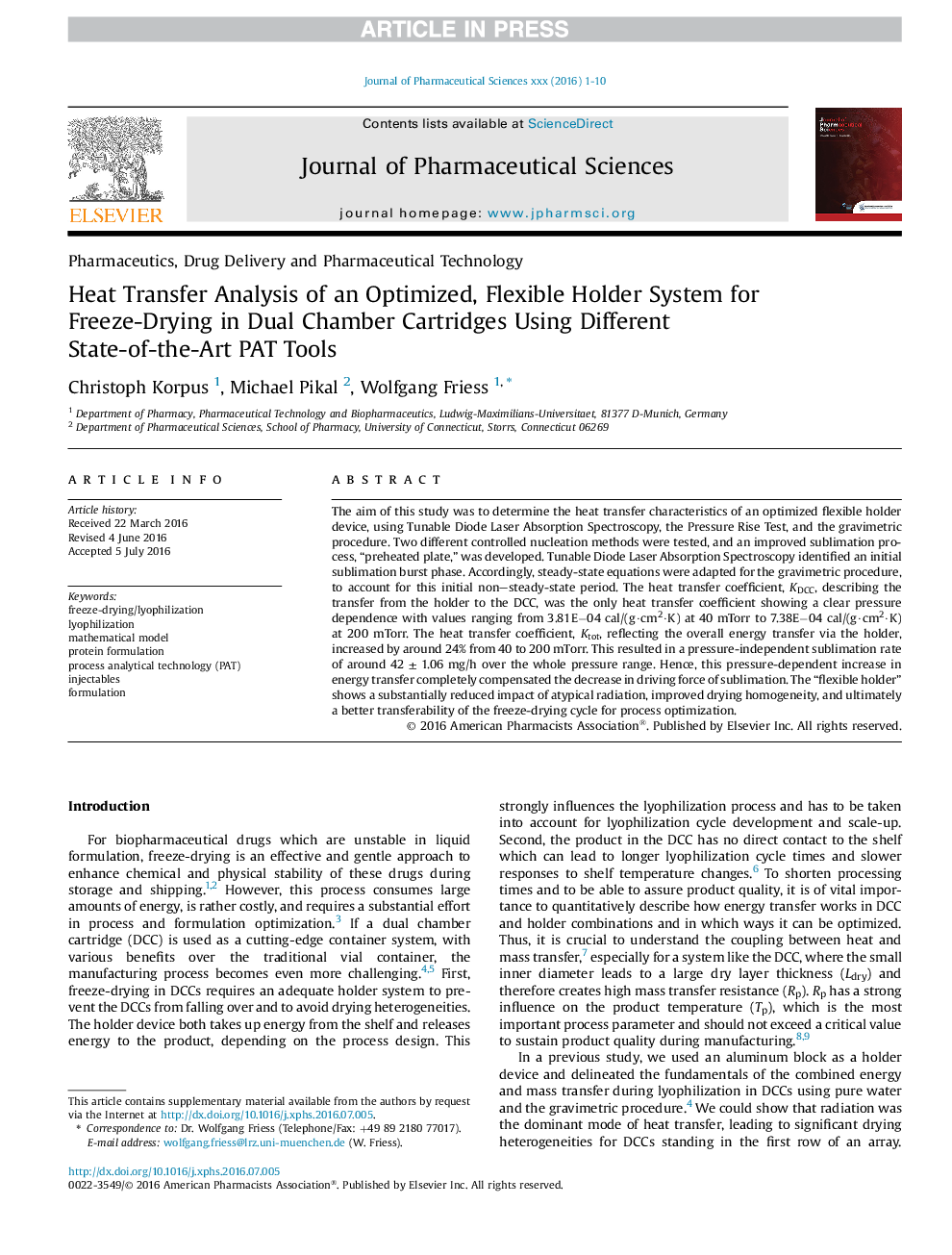| Article ID | Journal | Published Year | Pages | File Type |
|---|---|---|---|---|
| 8514739 | Journal of Pharmaceutical Sciences | 2016 | 10 Pages |
Abstract
The aim of this study was to determine the heat transfer characteristics of an optimized flexible holder device, using Tunable Diode Laser Absorption Spectroscopy, the Pressure Rise Test, and the gravimetric procedure. Two different controlled nucleation methods were tested, and an improved sublimation process, “preheated plate,” was developed. Tunable Diode Laser Absorption Spectroscopy identified an initial sublimation burst phase. Accordingly, steady-state equations were adapted for the gravimetric procedure, to account for this initial non-steady-state period. The heat transfer coefficient, KDCC, describing the transfer from the holder to the DCC, was the only heat transfer coefficient showing a clear pressure dependence with values ranging from 3.81Eâ04 cal/(g·cm2·K) at 40 mTorr to 7.38Eâ04 cal/(g·cm2·K) at 200 mTorr. The heat transfer coefficient, Ktot, reflecting the overall energy transfer via the holder, increased by around 24% from 40 to 200 mTorr. This resulted in a pressure-independent sublimation rate of around 42 ± 1.06 mg/h over the whole pressure range. Hence, this pressure-dependent increase in energy transfer completely compensated the decrease in driving force of sublimation. The “flexible holder” shows a substantially reduced impact of atypical radiation, improved drying homogeneity, and ultimately a better transferability of the freeze-drying cycle for process optimization.
Keywords
Related Topics
Health Sciences
Pharmacology, Toxicology and Pharmaceutical Science
Drug Discovery
Authors
Christoph Korpus, Michael Pikal, Wolfgang Friess,
